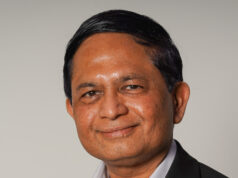
The 2017 edition of the annual PAIRS meeting was held in Dubai 15–18 March and reflected the growing enthusiasm of the interventional radiology community in the Middle East, writes Hicham T Abada.
We are also going to witness some changes: the acronym PAIRS, which used to stand for Pan Arab Interventional Radiology Society will now stand for Platform of Advanced Interventional Radiology Solutions, reflecting the more inclusive and global nature of the upcoming conference in 2018. In January, we also launched an open access journal for interventional radiologists, the Arab Journal of Interventional Radiology (AJIR), with biannual issues. This will represent another asset to be utilised by the young generation of interventional radiology to fully contribute not only clinically but also academically in order to expand the community of the region.
Minimally invasive treatments are gaining widespread acceptance in the local population. This is essentially because patients want to be actively informed about the most modern treatment options and are actively seeking out different media sources for clear answers about outcomes.
This year, we were able to implement a comprehensive programme that addressed dedicated sessions on critical limb ischaemia with a special focus on the diabetic foot, multiple lectures on venous interventions and varicose veins, a full day for aortic disease and extensive sessions on embolization and interventional oncology that continue to be very popular. In addition we had a designated neurointerventional radiology track as well.
It was also refreshing to observe that some centres in the region have initiated advanced programmes on prostate artery embolization and are even reporting preliminary data of the endovascular approach for the treatment of bleeding in patients with haemorrhoids. These treatments are limited to few established and experienced centres in North America and Europe, so it was exciting to see data emerging from the Middle East.
If we reflect a moment on market analysis reports, they have clearly shown that growth in North America is primarily driven by the increase in the prevalence of chronic diseases and an aging population. Although the population in the Middle East is much younger, there is a prevalence of diabetes, obesity, and kidney disease that has already significantly impacted the Middle East.
For instance, the World Health Organization’s most comprehensive report on diabetes shows there are now 422 million people with the disease worldwide. This includes about 43 million from the Eastern Mediterranean region, with nearly a million of those being solely from a single country of the Gulf Cooperation Council (GCC)—the UAE, which has a population of 9.1 million inhabitants. The importance of interventional radiology in the management of those patients is irreplaceable. There is no doubt about the increased need for interventional radiology in the region and it is imperative that interventional radiology curricula are implemented to fulfill patients’ needs.
Being involved in the annual meeting of the PAIRS programme for the last two years, I have witnessed an unprecedented momentum from young interventionalists in the whole region. Some of them have already initiated, or established high-quality programmes in their respective countries in the region. The PAIRS meeting has become a valuable and established platform to promote high standards of interventional radiology expertise and facilitate collaboration between physicians both within the region as well as international faculty.
Hicham T Abada is chief of Interventional Radiology, Cleveland Clinic Abu Dhabi, Abu Dhabi, UAE. He is also the programme chair of the annual PAIRS meeting in 2018.










